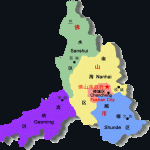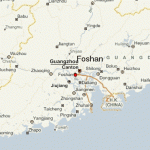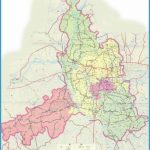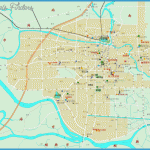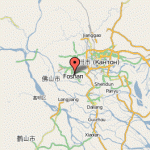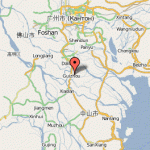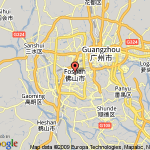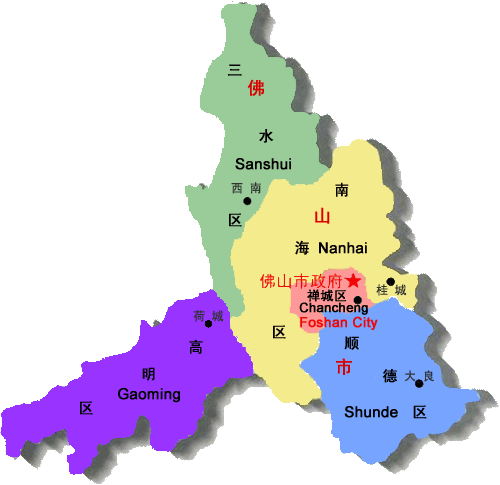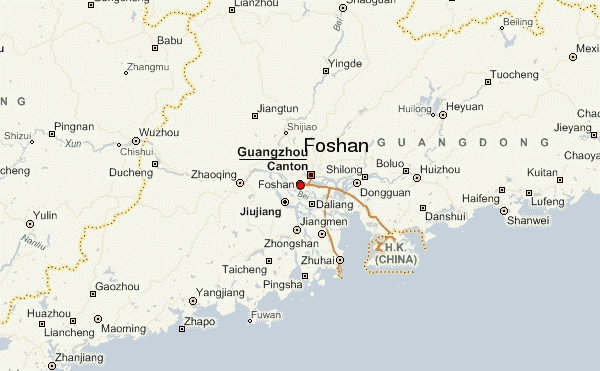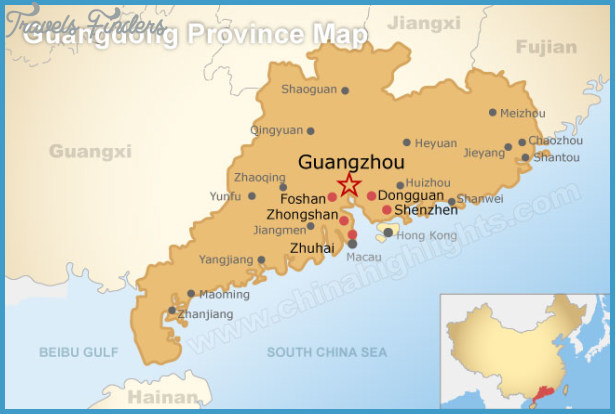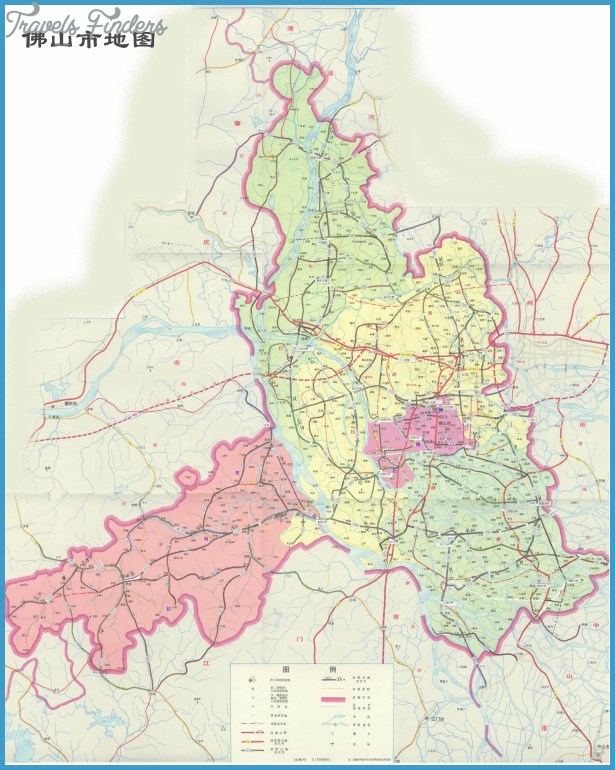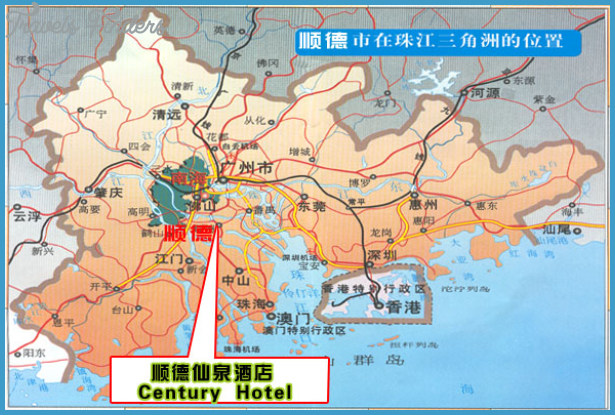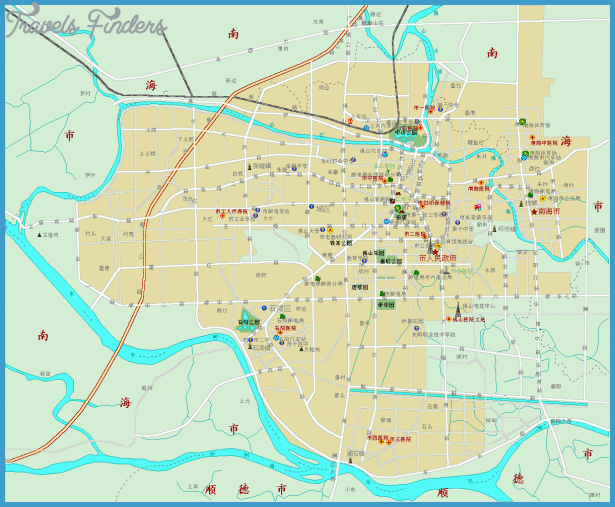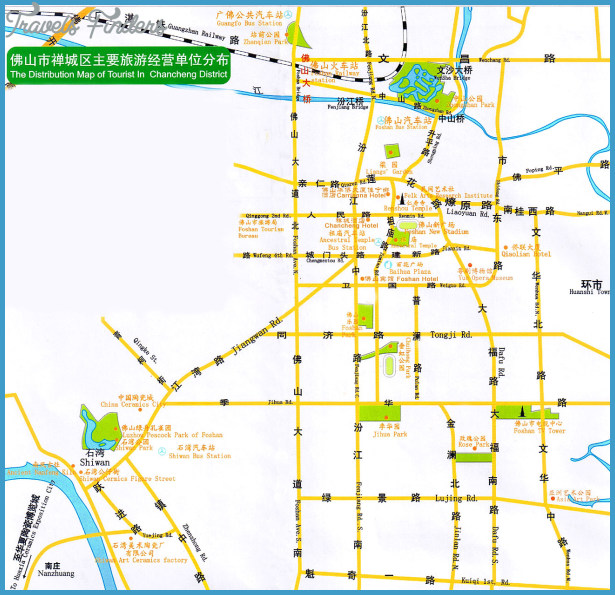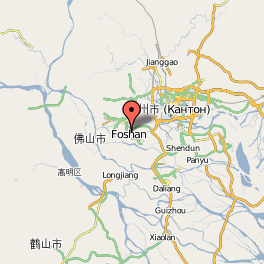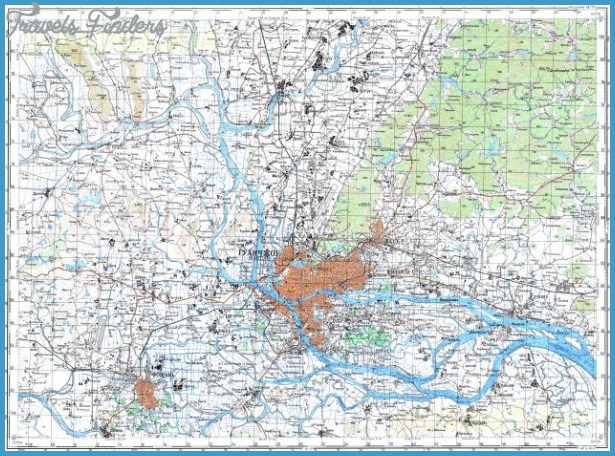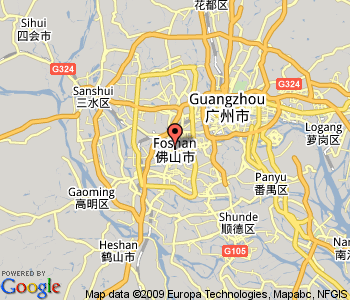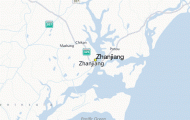Chinese equivalent
Situation History
To Guangzhou 26 km
Province: Guangdong
Altitude: 5m/16ft. Area: 77sq.km/30sq. miles Population: 333,000 (conurbation 2,630,000)
Foshan lies in the centre of the south of Guangdong province, about 20km/12’/2 miles south-west of Canton, at 113°10’E and 23°04’N.
Archaeological finds in Foshan prove that the region was inhabited 2000 years ago. In 628 three bronze Buddha statues were discovered, and these gave the town its name – Foshan literally means “Buddha Mountain”. It became an important Buddhist site. Under the Song dynasty (960-1279)
Ancestors (Foshan Zumiao)
Foshan was known as a centre ofthe porcelain industry (Shiwan porcelain), metalworking and silk-weaving. Porcelain manufacture is still a major industry, together with skilled crafts such as that of folding and cutting paper patterns.
The Temple of the Ancestors dates originally from the second half of the Sights 11th c. and was restored in 1372 following afire. It is dedicated to the God ofthe North, Ruler ofthe Waters, and not-as is often wrongly assumed-to Temple ofthe ancestors as such. The Chinese name Foshan Zumiao ,or Temple ofthe Ancestors”, simply implies that it is the oldest temple in the town. The rich ceiling decoration with many figures is its most interesting feature.
The complex covers an area of 3000sq.m/32,300sq.ft and includes the following buildings: the portico (Qian Dian), the main hall (Zheng Dian),the Festival Hall of Truth (Qingzhen Lou), the Pond of Scented Brocade (Jin-xiang Chi) and the Theatre of a Thousand Good Fortunes (Wanfu Tai).
In the walled pond in front of the portico there is a stone turtle, a symbol of long life. At one time performances were held in the theatre, which is decorated with gilded carvings.
The Institute of Folk Art is now housed in the former Temple of Brotherly Institute of Love and Long Life (Ren Shou Si) with its red pagoda. Porcelain, paper Folk Art designs and Chinese lanterns made of various materials are produced here.

